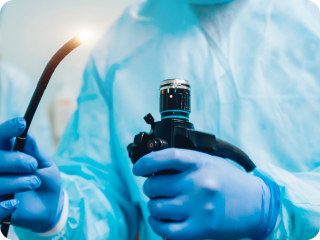
Minimally Invasive Equipment
With the growth of minimally invasive technology, the scope of medical techniques has broadened offering new ways for doctors to diagnose and treat their patients. As these medical innovations further develop, the fields of medicine which are seeing the most minimally invasive technologies used in practice include orthopedic, cosmetic surgery, reproductive health, cardiology and vascular procedures, bariatric procedures, gastroenterology, and urology.
The benefits of minimally invasive techniques include more precise incisions for smaller wounds, minimal blood loss, fewer complications, less pain, the opportunity for the patient to heal more quickly and reduced hospitalization time. To confirm the success of these minimally invasive techniques and to realize these benefits, force, pressure, temperature, and other sensors allow for accurate, reliable measurements so the equipment can perform as expected. In addition, these sensor devices are evolving to become increasingly more compact while also housing more smart technology to fit within and enable these minimally invasive medical tools. For both applications, the packaging of the sensor must be durable to withstand any harsh medical matter that it will encounter.


